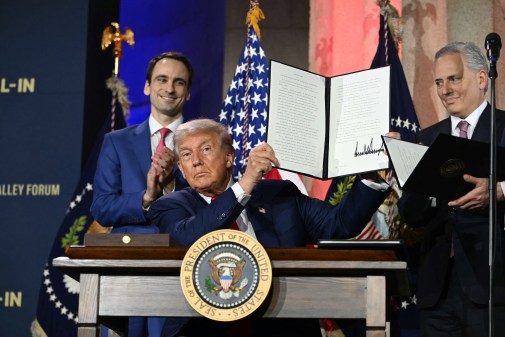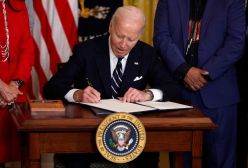GSA’s teams will assist agencies with CX under executive order

General Services Administration leaders are discussing how best to assign multidisciplinary teams to support agencies’ most important public-facing services, according to Chief Customer Officer Edward Walters.
The customer experience (CX) executive order (EO) issued in December directed GSA to support high-impact service providers (HISPs) like USA.gov, which Administrator Robin Carnahan wants redesigned to be a “digital federal front door” to government benefits, services and programs.
“We’re planning that the homepage will be organized intuitively based on life events,” Walters said, during an ACT-IAC virtual event Thursday.
Shared services will be organized around major experiences like a natural disaster or job loss with an effort to avoid people googling for them, he added.
Multidisciplinary teams will do that work for other HISPs, not simply consolidating agencies’ websites but inventorying them and working with senior leaders at agencies to improve them, Walters said.
“The breadth of our digital ecosystem definitely frustrates people,” he said.
GSA inventoried its website managers alone for the first time and found it has 238 websites, 128 of them informational; 56 top-level domains like GSA.gov and CIO.gov; and 29 distinct login experiences.
For that reason the agency also stood up a cross-agency Digital Council and Digital Customer Experience Executive Board last year to get a handle on similar issued governmentwide.
In addition to helping other agencies, GSA formed an internal Enterprise Digital Experience Team — at first consisting of multiple small details, but now a full-time unit reporting to Walters — as the backbone of a cross-functional capability to assist GSA in improving the customer experience on its many websites and digital properties.
The EO that solidified CX as an important part of government is “my dream EO” because it didn’t cut any of CX experts’ big asks, said Amira Boland, federal customer experience lead at the Office of Management and Budget.
“We of course have Section 4 that has all of these near-term, concrete commitments around specific services and deliverables,” Boland said. “And really the meat of all this EO is a ton of bureaucratic, behind-the-scenes, unsexy stuff, and that was supported and included obviously and recognized for being important — making more clear decision making when authority between agencies is unclear.”
Rather than requiring 80% trust in government across all services, five-minute call wait times across the board or uniform account updates across all government sites — all long-term goals — the EO simply asks agencies to identify their customers, services and whether they’re working. Answering those questions will leave agencies in a “way better place,” Boland said.
Going further will require statutory and legislative actions like passing the Trust in Public Service (TIPs) ACT, she added. The TIPS Act includes language granting OMB’s director flexibility to move funds between agencies when, say, a HISP serving multiple customer groups across agencies is performing well.
While there’s a fear in government of centralized budgets getting bigger, there’s also a need to bolster centralized capacities and talent doing good customer design work, Boland said.
“That’s a thing that I think Congress could support as well,” she said.






